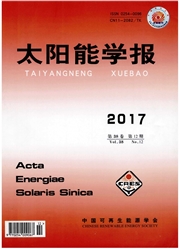

 中文摘要:
中文摘要:
A hybrid Cartesian structured grid method is proposed for solving moving boundary unsteady problems.The near body region is discretized by using the body-fitted structured grids,while the remaining computational domain is tessellated with the generated Cartesian grids.As the body moves,the structured grids move with the body and the outer boundaries of inside grids are used to generate new holes in the outside adaptive Cartesian grid to facilitate data communication.By using the alternating digital tree(ADT)algorithm,the computational time of hole-cutting and identification of donor cells can be reduced significantly.A compressible solver for unsteady flow problems is developed.A cell-centered,second-order accurate finite volume method is employed in spatial discretization and an implicit dual-time stepping low-upper symmetric Gauss-Seidel(LU-SGS)approach is employed in temporal discretization.Geometrybased adaptation is used during unsteady simulation time steps when boundary moves and the flow solution is interpolated from the old Cartesian grids to the new one with inverse distance weighting interpolation formula.Both laminar and turbulent unsteady cases are tested to demonstrate the accuracy and efficiency of the proposed method.Then,a 2-D store separation problem is simulated.The result shows that the hybrid Cartesian grid method can handle the unsteady flow problems involving large-scale moving boundaries.
 英文摘要:
英文摘要:
A hybrid Cartesian structured grid method is proposed for solving moving boundary unsteady problems. The near body region is discretized by using the body-fitted structured grids, while the remaining computational domain is tessellated with the generated Cartesian grids. As the body moves, the structured grids move with the body and the outer boundaries of inside grids are used to generate new holes in the outside adaptive Cartesian grid to facilitate data communication. By using the alternating digital tree (ADT) algorithm, the computational time of hole-cutting and identification of donor cells can be reduced significantly. A compressible solver for unsteady flow problems is developed. A cell-centered, second-order accurate finite volume method is employed in spatial discreti- zation and an implicit dual-time stepping low-upper symmetric Gauss-Seidei (LU-SGS) approach is employed in temporal discretization. Geometry-based adaptation is used during unsteady simulation time steps when boundary moves and the flow solution is interpolated from the old Cartesian grids to the new one with inverse distance weigh- ting interpolation formula. Both laminar and turbulent unsteady cases are tested to demonstrate the accuracy and efficiency of the proposed method. Then, a 2-D store separation problem is simulated. The result shows that the hybrid Cartesian grid method can handle the unsteady flow problems involving large-scale moving boundaries.
 同期刊论文项目
同期刊论文项目
 同项目期刊论文
同项目期刊论文
 期刊信息
期刊信息
